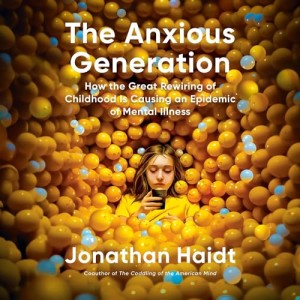When was the last time you changed your mind about something important?
Perhaps you rethought a core political belief: gun control, or abortion, or a stance on international relations.
Maybe you gave up on one teaching practice to adopt a once-unthinkable alternative.
Just possibly, after a lifetime aversion to vegetables, you realized they’re delicious. (Wrap pencil-thin aspargus in proscuitto, give it a glug of olive oil and a sprinkle of parmesan, pop it on the grill…heaven.)
Now think back: what led you to change your mind? How did you stop believing one thing and start believing a contradictory position? What made the magic happen?
This broad question has specific importance here at Learning and the Brain.
After all: if we’re doing our job right, teachers will often leave our conferences and workshops thinking:
“Wow, I should really try this new way. Now that I know more about psychology and neuroscience research, I’ve got LOTS of ideas for improving my work, my classroom, and my school!”
To say the same thing in reverse: if everyone leaves a LatB event thinking EXACTLY what they believed before the event … well … why have the conference? What good did it serve?
Understandable Passion
To be fair, we at LatB have it relatively easy.
Most people come to our conferences wanting to get new ideas. Attendees are — for the most part — hoping that they’ll have new ways of thinking about teaching and learning. Mind-changing is a feature, not a bug.
In many (most?) educational spheres, however, our profession often prefers sturdy conviction over openness to new ideas.
Whether we’re debating the best approach for reading instruction, or high- vs. low- structure pedagogy, or the right way to use technology in schools, we have strong opinions.
And, because we have strong opinions, we want others to share those opinions.
This desire for others to share my opinions simply makes sense. For example:
If I know for certain that my approach to reading instruction is better than my colleague Lloyd’s approach, I want Lloyd to change his approach! Because mine is better!!
Everyone — from the individual student to society at large — suffers because of Lloyd’s wrongness. He MUST BE STOPPED. Even better, he must be CONVERTED.
You can understand my passion here…
The Problem with Passion
Although this passion is understandable, it also creates problems of its own.
Specifically, my passion might prompt me to say:
“Lloyd, listen up. You’re obviously wrong. I’m obviously right. So, do it my way. Pronto.”
Now, in my defense, it’s entirely possible that I am right and Lloyd is wrong. So, this statement could be factually accurate.
However, whether or not the statement is true, it creates real problems.
At the beginning of this blog post, I asked you to recall a time when you did in fact change your mind.
Did you do so because someone said: “I’m right, you’re wrong, so do it my way?”
I’m guessing the your answer is “no.”
It might be “heck no.”
The answer, I suspect, is rarely “heck yes.”
In other words: although “I’m right, you’re wrong” might be a TRUE statement, it is almost certainly a WILDLY INEFFECTIVE statement…because it doesn’t accomplish the goal: changing someone’s mind.
If I passionately want to persuade Lloyd to change his mind, and I knowingly adopt a strategy that almost certainly won’t change his mind…well, my passion has in fact defeated my purpose.
Beyond Hypotheticals
I’m writing this blog post because of a poster I’ve seen several times recently (where else?) on eX-Twitter.
It says, basically:
Because we’re talking about education, beliefs don’t matter; evidence matters.
Now, on the one hand, I typically agree with the research-based conclusions of the people who highlight this poster.
That is: to the degree I’m on a team in the world of cognitive science, my team-mates are likeliest to make this statement.
On the other hand, I wince every time I see it. I do so because I think this statement makes it conspicuously less likely that my team will convince anyone to do anything.
To me, the poster sounds — more or less — like it’s saying this:
Your beliefs don’t matter to me; my evidence must matter to you.
And yet, who will listen to me after I’ve said “your beliefs don’t matter to me”? Who should listen to me after I’ve said such a thing? Why would someone who experiences my open contempt listen to and trust me?
I just don’t think people work that way.
Alternative Strategy, Take 1
If I’m going to object to the “you’re wrong; I’m right” strategy, I should probably propose an alternative. I will, in fact, propose two.
When I go to do PD work at a school or conference, I usually begin by saying something like this:
“I’m not here to tell you what to do. I don’t know enough about teaching 6th grade history — or 1st grade math, or soccer coaching — to be able to do that.
Honestly, I don’t think cognitive science can tell teachers what to do.
Instead, I’m here with some ideas about how to think about what you do.
Once you hear these new cognitive-science ways of thinking, you will have wise discussions on how to apply them to you work. That is: you will figure out what to do.
Cognitive science is, I think, really good at helping this way.”
This introduction has, I believe at least two benefits.
First: it’s true. No cognitive scientist knows enough to tell me how to teach grammar well. But, many can help me think about teaching it well. (E.g.: “having too many choices might overwhelm a student’s working memory, so design practice exercises to align with their prior knowledge!”)
Second: this introduction sets a tone. I am, in effect, saying:
“We all bring kinds of expertise to this day.
I know a lot about, say, Posner and Rothbart’s theory of attention.
You know your curriculum, and your students, and your school culture, and your society’s culture.
When we pool all that expertise, we’re likelier to get to good answers. Let’s work together.”
Rather than tell people to abandon their beliefs in favor of my evidence, I invite them to find the best ways to combine both.
I’m not certain that they’ll do exactly what I think they should do.
But I think they’re MUCH LIKELIER to take small steps in a good direction than if I start by dismissing everything they’ve believed up until now.
Alternative Strategy, Take 2
An alternative to my strategy is: I could be completely wrong.
No, really.
Although I doubt that telling people “my evidence trumps your beliefs” does much good, others might have found this strategy to be highly effective.
Heck: you might know of research showing that insisting on evidence (and dismissing prior belief) does cause teachers to change their minds and adopt better teaching practices.
If you have that experience — or know of such research — please share it with me! I would LOVE to be able to try this approach with confidence.
After all, as XKCD has told us, people are often wrong. I’m hoping to be better at changing minds…including my own.
Sadly, we’ve been having lots of troubles with the “comments” feature on this blog. We get dozens (hundreds) of spammy comments, wanting to advertise all sorts of sketchy products. And the comment filter just might prevent you from responding to this post.
So: if you have reason to advocate for the “my evidence > your belief” strategy, please reach out to me at my first name (Andrew) and then the “at” sign and then the name of my own company (TranslateTheBrain) and then “.com”
Because, I really do hope you will change my mind. Please!












